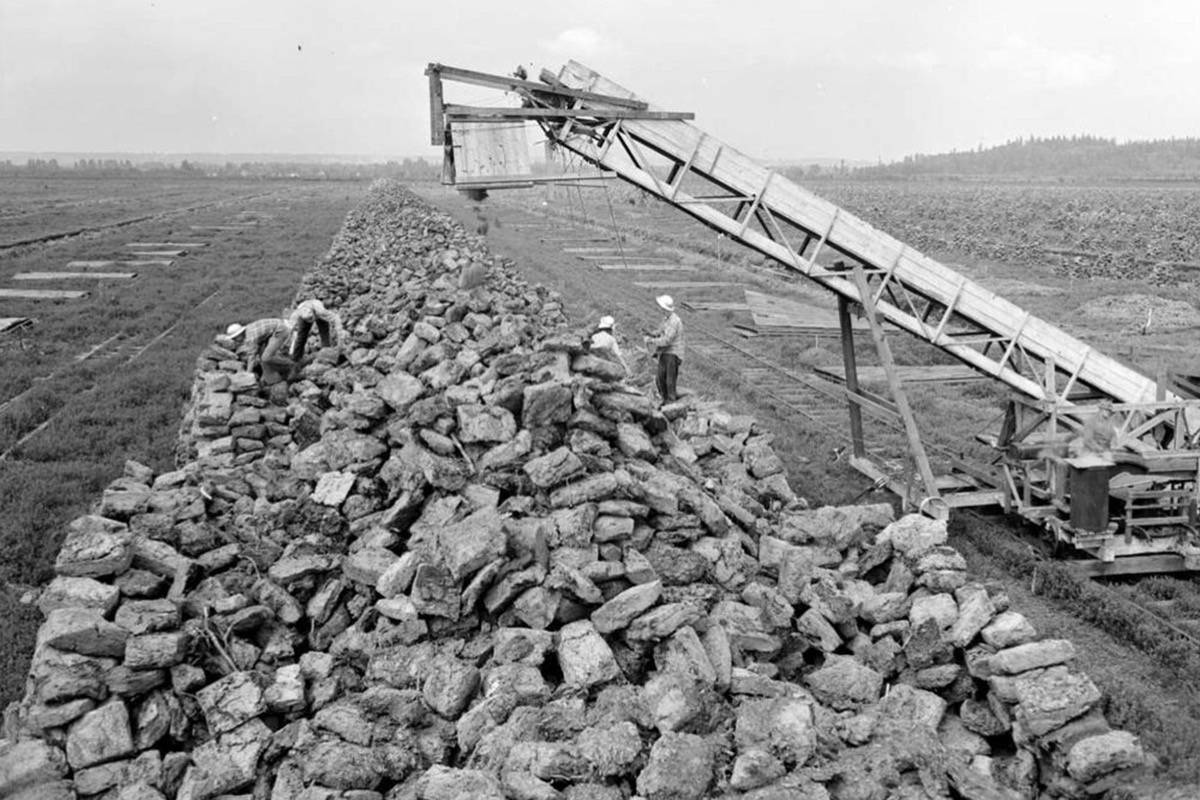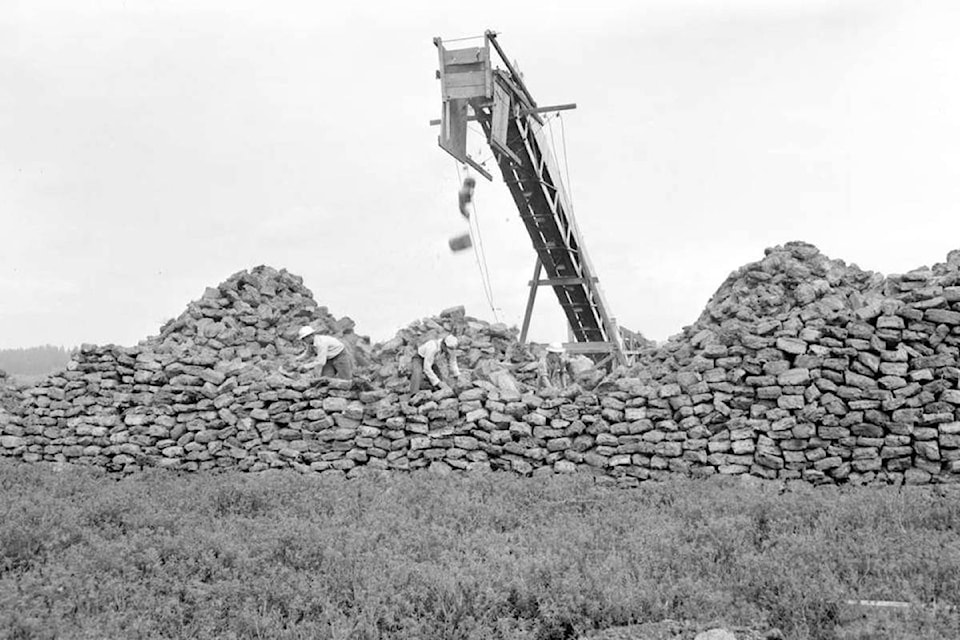By Nancy Demwell, Delta Heritage Society
The remains of North Delta’s peat plant lie at the foot of 72nd Avenue, off Westview Drive and just on the other side of the rail tracks. This plant was one of two constructed by the Atkins & Durbrow Peat Company which processed the peat of Burns Bog from 1940 to 1964. The facility consisted of a processing building and large sheds to store the peat bales. The plant yard included walls of peat ready for processing and rail sidings for the train cars to haul the product to market.
At its peak, the plant was a busy centre of activity with well over 100 people coming, going and working at the plant. The large labour force employed by Atkins & Durbrow was mainly used for digging and drainage work, but as the processing plant operated during the winter a large proportion of the workers had work almost year-round.
In one year, British Columbia became the largest peat producing region in the world. In 1941 peat was no longer being exported to the United States from war stricken Europe, and Canada filled that gap. British Columbia provided 53 per cent of Canada’s peat production in 1942. Burns Bog was a major source of that peat because of its convenient proximity to the American border as well as its bountiful peat deposit.
The large North Delta plant was constructed in 1943 to process the peat mined from the bog. The peat was hand cut in squares and stacked in piles to drain in the bog. When the peat was partially dry it was brought to the plant, where it was chopped, aerated and dried. It was then baled and shipped on the Great Northern Railway to the United States. This was the rail line that now parallels Westview Drive and Highway 91.
READ MORE: North Delta history: Great Northern Railway’s coastal spur line
During the Second World War, peat was used to pack munitions and in the construction of fire bombs. More than 100,000 bales of peat from Burns Bog were shipped to Las Vegas munition factories. Seventy per cent of Burns Bog was affected by peat mining.
After the war, peat returned to being primarily an agricultural and forestry product. In 1964, the plant was bought by the Western Peat Company. Not finding the business profitable, the plant stood idle for many years before finally being torn down in the late 1980s.
Nancy Demwell is a board member with the Delta Heritage Society (formerly the Delta Museum and Archives Society).
editor@northdeltareporter.com
Like us on Facebook and follow us on Twitter

